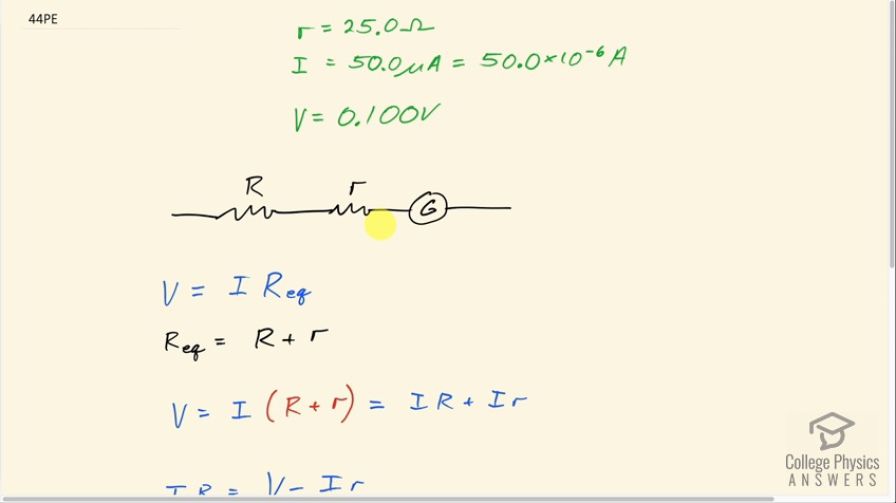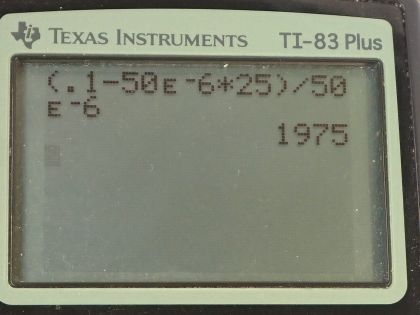Question
Find the resistance that must be placed in series with a galvanometer having a sensitivity (the same as the one discussed in the text) to allow it to be used as a voltmeter with a 0.100-V full-scale reading.
Final Answer
Solution video
OpenStax College Physics for AP® Courses, Chapter 21, Problem 44 (Problems & Exercises)

vote with a rating of
votes with an average rating of
.
Calculator Screenshots
Video Transcript
This is College Physics Answers with Shaun Dychko. A galvanometer has an internal resistance you could say of 25.0 ohms and the full scale deflection we are told is 50.0 microamps or in other words, the sensitivity of the galvanometer is 50.0 microamps and it should have a full scale deflection when it's measuring 0.100 volts. So when you put this and this end across some other thing... like if there's some circuit here and maybe there's some resistance there and we are measuring the voltage across that resistance suppose we want to get a full scale reading of 0.100 volts when there's 50.0 microamps going through this galvanometer part of the circuit. Okay! So Ohm's law says that the voltage across this end and between these two terminals is the current that's flowing multiplied by the total resistance— that's equivalent resistance— and in this case since these resistors are in series, we can add them directly to find their total resistance. So in other words, the voltage then is current multiplied by this other resistance that we want to introduce plus the internal resistance and we are trying to find this R here, what resistance should we put here such that we have this 0.100 voltage reading when there's 50.0 microamps going through this galvanometer that has an internal resistance of 25.0 ohms? So multiply the current into both terms in the bracket and we get IR plus Ir and then subtract Ir from both sides and then switch the sides around and we get IR equals V minus Ir and then divide both sides by this current to solve for this introduced resistance R. So that will be 0.100 volts minus 50.0 microamps times 25 ohms divided by 50.0 microamps and that works out to 1.98 times 10 to the 3 ohms or 1.98 kiloohms.
